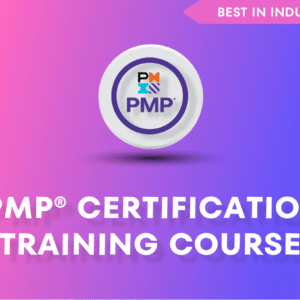In the digital age, ranking at the top of Google search results can significantly boost your website traffic, generate more leads, and increase sales. But with millions of websites competing for attention, how do you claim that coveted #1 spot? The answer lies in Search Engine Optimization (SEO) a powerful strategy that helps search engines understand your website and match it with users’ search queries.
This guide will walk you through proven steps to rank #1 on Google, combining technical SEO, high-quality content, and link-building strategies.
Why Ranking #1 Matters
Studies show that the top result on Google captures around 27.6% of all clicks, while the second and third spots drop significantly in traffic. If you want your business to grow, securing a high-ranking position is essential for visibility and authority.
As SEO expert Brian Dean has highlighted:
“To rank well on Google, you first need to create value that earns the love and attention of others.”
This quote emphasizes the importance of building a strong, relevant, and engaging online presence one that not only pleases search engines but also provides value to your audience.
How Google Ranks Websites
Before diving into SEO strategies, let’s understand how Google decides which pages rank at the top. Google uses a complex algorithm that considers over 200 ranking factors, but some of the most important ones include:

Ranking Factor Description Importance
Content Quality Relevance, depth, and usefulness of your content 🔥 High
Backlinks Links from authoritative and relevant websites 🔥 High
Page Speed How fast your website loads ⭐ Medium
Mobile Friendliness How well your website performs on mobile devices ⭐ Medium
User Experience (UX) Navigation, design, and engagement metrics 🔥 High
Technical SEO Site structure, indexing, and crawlability ⭐ Medium
Keyword Optimization Using relevant keywords in strategic areas like titles and content 🔥 High
Let’s explore how to master these factors and move your website to the top of Google’s rankings.
Step 1: Do Comprehensive Keyword Research
A successful SEO strategy begins by finding the most relevant keywords for your audience.
Keywords are the search terms your potential customers use when looking for your products or services. For example, if you’re a fitness coach, potential keywords might include “online fitness classes” or “weight loss tips.”
How to Find the Right Keywords:
Utilize keyword research tools such as Google Keyword Planner, Ahrefs, or Ubersuggest to uncover the best keywords for your content.
Focus on long-tail keywords (phrases with 3+ words) that are less competitive and more targeted.
Analyze your competitors’ top ranking pages to find keyword gaps.
Step 2: Create High-Quality, Optimized Content
Content is the backbone of SEO. Google rewards websites that provide valuable, original, and well-structured content. Aim to create content that solves your audience’s problems, answers their questions, and keeps them engaged.
Tips for SEO-Optimized Content:
Integrate your primary keyword seamlessly into the page title, meta description, and the initial section of your content to boost relevance and improve SEO performance.
Use related keywords naturally throughout the content.
Format with headings (H1, H2, H3) for better readability.
Add internal links to your other relevant pages.
Include multimedia elements like images, videos, and infographics.
For example, if your target keyword is “How to Rank #1 on Google”, your content should thoroughly explain the strategies and steps involved, just like this article!

Step 3: Improve Your On-Page SEO
On-page SEO is the practice of optimizing individual web pages by refining their structure, content, and keywords to improve visibility in search engine results and climb higher in rankings.
4.1-mini
Key areas to focus on:
Title Tag: Include your target keyword naturally.
Meta Description: Write a compelling summary to improve click through rates.
URL Structure: Create concise, clear, and keyword-focused URLs (e.g., www.yoursite.com/rank-1-on-google).
Image Optimization: Compress images and add descriptive ALT text with keywords.
Page Speed: Use tools like Google PageSpeed Insights to improve load times.
Step 4: Build High-Quality Backlinks
Backlinks, which are links from credible sites pointing to yours, play a key role in SEO. They act as endorsements, signaling to search engines that your content is trustworthy, authoritative, and worth ranking higher.
Strategies for Earning Backlinks:
Guest Blogging: Write articles for reputable industry blogs.
Develop Content Worth Linking To: Share original studies, detailed guides, or visually appealing infographics that others will find valuable and want to reference.
Outreach: Contact website owners and suggest linking to your relevant content.
Directory Listings: Submit your site to high-quality directories.
Step 5: Optimize for User Experience (UX)
Google prioritizes websites that offer a smooth, user-friendly experience, ensuring easy navigation and engaging interactions for visitors.To improve your site’s performance:
Is mobile-friendly and responsive.
Loads in under 3 seconds.
Has clear navigation and intuitive menus.
Uses readable fonts and sufficient white space.
Minimizes pop-ups and distractions.
A positive user experience leads to longer page visits, lower bounce rates, and higher rankings.

Step 6: Track Your SEO Performance
SEO is an ongoing process. Regularly monitor your progress using tools like:
Google Search Console (track rankings, impressions, and clicks)
Google Analytics (measure traffic sources, behavior, and conversions)
Ahrefs or SEMrush (backlink tracking, keyword positions)
Analyze your website’s data each month and refine your strategy by focusing on what is effective and adjusting areas that need improvement.
Conclusion
Ranking #1 on Google isn’t an overnight achievement, but it’s a realistic goal with the right SEO strategies. Focus on keyword research, content quality, on-page SEO, backlink building, and user experience and remember, SEO is a marathon, not a sprint.
By staying consistent, creating value, and adapting to Google’s evolving algorithms, you’ll be well on your way to securing that top spot.
Read more: Techinal SEO services





